Alfa Romeo Junior vs Hyundai i30 – Differences & prices compared
Compare performance, boot capacity, efficiency and price at a glance.
Find out which car is the better choice for you – Alfa Romeo Junior or Hyundai i30?
Costs and Efficiency:
When it comes to price and running costs, the biggest differences usually appear. This is often where you see which car fits your budget better in the long run.
Hyundai i30 has a barely noticeable advantage in terms of price – it starts at 24000 £, while the Alfa Romeo Junior costs 25700 £. That’s a price difference of around 1680 £.
Fuel consumption also shows a difference: Alfa Romeo Junior manages with 4.80 L and is therefore a bit more efficient than the Hyundai i30 with 5.70 L. The difference is about 0.90 L per 100 km.
Engine and Performance:
Power, torque and acceleration say a lot about how a car feels on the road. This is where you see which model delivers more driving dynamics.
When it comes to engine power, the Alfa Romeo Junior has a significantly edge – offering 280 HP compared to 140 HP. That’s roughly 140 HP more horsepower.
In acceleration from 0 to 100 km/h, the Alfa Romeo Junior is clearly quicker – completing the sprint in 5.90 s, while the Hyundai i30 takes 9.60 s. That’s about 3.70 s faster.
In terms of top speed, the Alfa Romeo Junior performs minimal better – reaching 206 km/h, while the Hyundai i30 tops out at 197 km/h. The difference is around 9 km/h.
There’s also a difference in torque: Alfa Romeo Junior pulls noticeable stronger with 345 Nm compared to 253 Nm. That’s about 92 Nm difference.
Space and Everyday Use:
Beyond pure performance, interior space and usability matter most in daily life. This is where you see which car is more practical and versatile.
Both vehicles offer seating for 5 people.
In curb weight, Hyundai i30 is minimal lighter – 1291 kg compared to 1380 kg. The difference is around 89 kg.
In terms of boot space, the Alfa Romeo Junior offers hardly perceptible more room – 415 L compared to 395 L. That’s a difference of about 20 L.
In maximum load capacity, the Hyundai i30 performs minimal better – up to 1301 L, which is about 21 L more than the Alfa Romeo Junior.
When it comes to payload, Hyundai i30 slightly takes the win – 509 kg compared to 420 kg. That’s a difference of about 89 kg.
Who comes out on top?
Overall, the Alfa Romeo Junior shows itself to be outperforms in nearly all aspects and secures the title of DriveDuel Champion.
It convinces with the more balanced overall package and proves to be the more versatile choice for everyday use.
 @ Alfa Romeo / Stellantis Media
@ Alfa Romeo / Stellantis Media
Alfa Romeo Junior
Alfa Romeo Junior
The Alfa Romeo Junior captures the essence of Italian design with its sleek lines and compact dimensions, making it an icon of elegance and performance. With a spirited driving experience and a charming retro aesthetic, it appeals to enthusiasts and casual drivers alike. This delightful car embodies the brand's rich heritage while remaining a fun and engaging option for those seeking a unique automotive experience.
details @ Alfa Romeo / Stellantis Media
@ Alfa Romeo / Stellantis Media
 @ Alfa Romeo / Stellantis Media
@ Alfa Romeo / Stellantis Media
 @ Alfa Romeo / Stellantis Media
@ Alfa Romeo / Stellantis Media
Hyundai i30
The Hyundai i30 stands out in the hatchback segment with its sleek design and modern features. It offers a comfortable ride with a well-crafted interior that caters to both driver and passengers. With its emphasis on safety and technology, the i30 provides a balanced driving experience suitable for urban and suburban environments.
details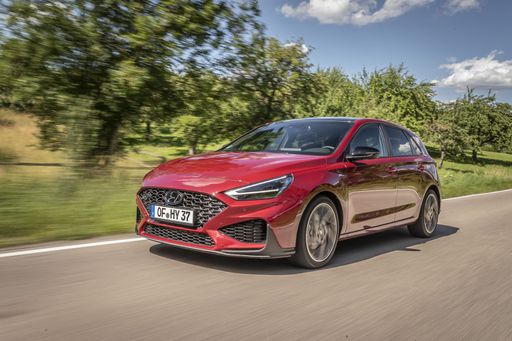 @ Hyundai Motor Company
@ Hyundai Motor Company
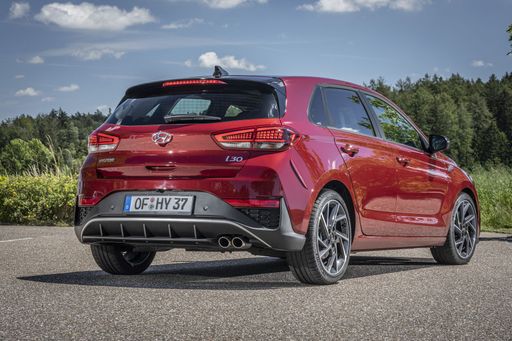 @ Hyundai Motor Company
@ Hyundai Motor Company
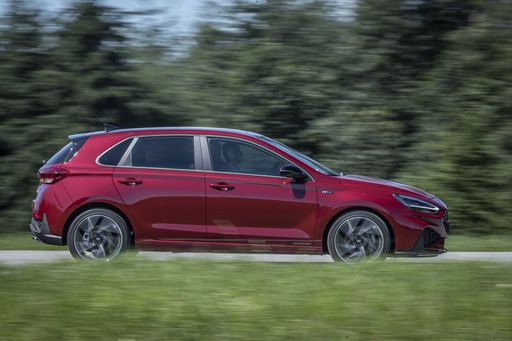 @ Hyundai Motor Company
@ Hyundai Motor Company
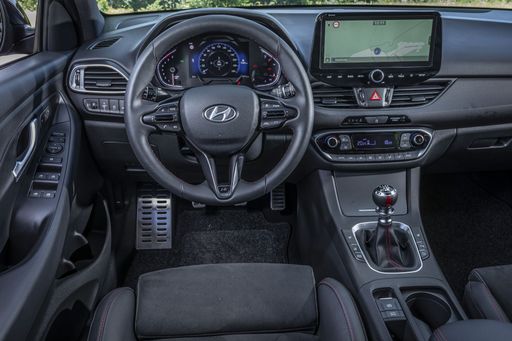 @ Hyundai Motor Company
@ Hyundai Motor Company
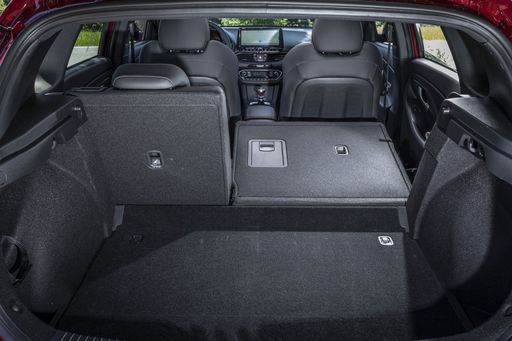 @ Hyundai Motor Company
@ Hyundai Motor Company
 @ Alfa Romeo / Stellantis Media
@ Alfa Romeo / Stellantis Media
|
 @ Hyundai Motor Company
@ Hyundai Motor Company
|
|
|
|
Costs and Consumption |
|
|---|---|
|
Price
25700 - 41600 £
|
Price
24000 - 29300 £
|
|
Consumption L/100km
4.8 - 5.4 L
|
Consumption L/100km
5.7 - 6 L
|
|
Consumption kWh/100km
15.1 - 17.5 kWh
|
Consumption kWh/100km
-
|
|
Electric Range
344 - 410 km
|
Electric Range
-
|
|
Battery Capacity
0.4 - 51 kWh
|
Battery Capacity
-
|
|
co2
0 - 119 g/km
|
co2
130 - 136 g/km
|
|
Fuel tank capacity
44 - 45 L
|
Fuel tank capacity
50 L
|
Dimensions and Body |
|
|---|---|
|
Body Type
SUV
|
Body Type
Hatchback
|
|
Seats
5
|
Seats
5
|
|
Doors
5
|
Doors
5
|
|
Curb weight
1380 - 1689 kg
|
Curb weight
1291 - 1407 kg
|
|
Trunk capacity
340 - 415 L
|
Trunk capacity
395 L
|
|
Length
4173 mm
|
Length
4340 mm
|
|
Width
1781 mm
|
Width
1795 mm
|
|
Height
1505 - 1538 mm
|
Height
1455 mm
|
|
Max trunk capacity
1205 - 1280 L
|
Max trunk capacity
1301 L
|
|
Payload
390 - 420 kg
|
Payload
463 - 509 kg
|
Engine and Performance |
|
|---|---|
|
Engine Type
Electric, Petrol MHEV
|
Engine Type
Petrol, Petrol MHEV
|
|
Transmission
Automatic
|
Transmission
Manuel, Automatic
|
|
Transmission Detail
Dual-Clutch Automatic, Reduction Gearbox
|
Transmission Detail
Manual Gearbox, Dual-Clutch Automatic
|
|
Drive Type
Front-Wheel Drive, All-Wheel Drive
|
Drive Type
Front-Wheel Drive
|
|
Power HP
136 - 280 HP
|
Power HP
100 - 140 HP
|
|
Acceleration 0-100km/h
5.9 - 9.1 s
|
Acceleration 0-100km/h
9.6 - 13.1 s
|
|
Max Speed
150 - 206 km/h
|
Max Speed
178 - 197 km/h
|
|
Torque
230 - 345 Nm
|
Torque
172 - 253 Nm
|
|
Number of Cylinders
3
|
Number of Cylinders
3 - 4
|
|
Power kW
100 - 207 kW
|
Power kW
74 - 103 kW
|
|
Engine capacity
1199 cm3
|
Engine capacity
998 - 1482 cm3
|
General |
|
|---|---|
|
Model Year
2024 - 2025
|
Model Year
2024
|
|
CO2 Efficiency Class
A, C, D
|
CO2 Efficiency Class
D, E
|
|
Brand
Alfa Romeo
|
Brand
Hyundai
|
What drive types are available for the Alfa Romeo Junior?
Available configurations include Front-Wheel Drive or All-Wheel Drive.
The prices and data displayed are estimates based on German list prices and may vary by country. This information is not legally binding.
